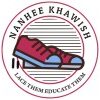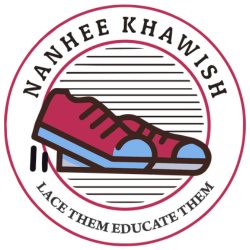The Harsh Reality of Barefoot Walking: A Challenge for Students in Rural Areas and Government Schools
In many rural areas and government schools across the country, students are forced to walk barefoot due to financial constraints. Their parents, struggling to make ends meet, cannot afford to buy them a pair of shoes. This is a common and overlooked problem, especially in remote villages, where poverty dictates every aspect of life.
The Daily Struggle of Barefoot Students
The Nanhee Khawish Foundation recognizes the critical impact that walking barefoot has on the health, safety, and dignity of children in underserved communities. Understanding the challenges these children face, the foundation is dedicated to providing a comprehensive solution that includes:
1.Footwear Distribution Programs: Nanhee Khawish foundation organizes initiatives to distribute durable and affordable footwear to children, ensuring they have proper protection against harsh terrain and extreme weather conditions.
2.Health Education: Alongside providing shoes, Nanhee Khawish foundation educates communities about foot care and hygiene. This includes workshops on how to treat minor injuries and prevent infections that can arise from walking barefoot.
- Community Engagement: Nanhee Khawish foundation actively involves parents, teachers, and local leaders in its initiatives, fostering a community-wide commitment to the well-being of children. This collaborative approach helps ensure that the importance of protecting children’s feet is recognized and prioritized.
4.Advocacy: By raising awareness about the importance of proper footwear for children’s health and education, Nanhee Khawish foundation advocates for policies and programs that support vulnerable children and their right to safety and dignity.
5.Sustainable Solutions: Nanhee Khawish foundation explores sustainable options such as partnering with local artisans to create affordable footwear, thereby supporting local economies while addressing the issue at hand.
Through these efforts, the Nanhee Khawish Foundation aims not only to protect the feet of children but also to restore their dignity, enabling them to attend school and participate in community activities without fear of injury or illness. Their work highlights the profound connection between basic needs, health, and education, ultimately striving to create a healthier, safer, and more equitable future for all children.
Health Risks and Safety Concerns
The absence of proper footwear can lead to severe health problems, including:
- Infections: Walking barefoot on unsanitary surfaces exposes children to bacterial and fungal infections.
- Injuries: Sharp stones, thorns, and broken glass pose constant dangers to their feet.
- Parasitic Diseases: In many villages, soil-transmitted infections like hookworm thrive in barefoot conditions, leading to malnutrition and stunted growth.
- Cold Weather Effects: In colder regions, the lack of shoes causes frostbite and other health complications.
Psychological and Social Impact
Being barefoot also affects a child’s self-esteem and confidence. Many children feel ashamed and embarrassed in front of their peers, leading to social exclusion. This problem also creates a barrier to education, as some children choose to skip school rather than face ridicule or endure physical discomfort.
Why This Problem Persists
Several factors contribute to the persistence of barefoot walking among rural students:
- Poverty: Families prioritize food and shelter over footwear, considering it a luxury.
- Lack of Awareness: Some parents may not understand the long-term health impacts of walking barefoot.
- Insufficient Government Support: Although some welfare programs provide school uniforms and mid-day meals, free footwear is rarely included in these schemes.
- Cultural Acceptance: In some communities, barefoot walking is normalized, further delaying the demand for change.
Possible Solutions
To address this issue, multiple stakeholders, including the government, NGOs, and the public, must take action. Some possible solutions include: Nanhee Khawish Foundation as non-profitable organisations working to eliminate this problem and working together with individuals , corporates and governments sectors
- Government Initiatives:
- Providing free shoes under school welfare schemes.
- Implementing awareness programs on the importance of footwear.
- NGO and Community Efforts:
- Organizing donation drives to distribute shoes.
- Setting up shoe banks where people can donate gently used footwear.
- Corporate Social Responsibility (CSR) Initiatives:
- Encouraging businesses to contribute shoes as part of their social welfare programs.
- Public Awareness and Participation:
- Spreading awareness through social media campaigns.
- Encouraging local leaders to advocate for free footwear for students.
Conclusion
Barefoot walking among students in rural areas and government schools is not just an issue of affordability; it is a matter of health, dignity, and equal opportunity. It is crucial to address this challenge collectively, ensuring that every child, regardless of their financial background, has access to a basic necessity like footwear. By taking small yet significant steps, we can make a lasting impact on the lives of these children and help them walk towards a brighter future—one step at a time.






Leave a Reply